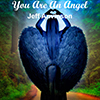Standard Fretting Hand/Arm
and
Guitar Holding Technique
The following paragraphs discuss how to hold a guitar and use the fretting hand and arm. The plucking hand and arm are more complex and will be covered at a later date. These are generally-accepted guidelines, but variations will be found in certain contexts and due to physiological differences between individuals. They are meant as a general guide, not as absolutes.
1. Standard Guitar Fretting Hand and Arm Technique
Standard guitar fretting hand, arm, and shoulder technique will generally adhere to the following characteristics, subject to some variation in special circumstances.
- Shoulder is relaxed.
- Wrist is straight.
- Finger joints are bent.
- Elbow is held such that the forearm, wrist and hand maintain a straight neutral shape.
- String is pushed down with the tip of the finger.
- Fingertip is placed near the fret wire on the soundhole side of the fret.
- Palm of hand is parallel with the guitar neck. If you drew a straight line along the same joints of all fingers it would be roughly parallel with the strings.
- Thumb extended (not bent) and placed behind the neck, touching the neck somewhere in the zone between your first and second fingers.
- The tip of your thumb should not touch the neck, but the bone at the joint nearest the tip should.
- Squeeze between the thumb joint bone and the tip of the finger to create a good tone.
2. Standard Guitar Holding Technique
Your guitar should be held so that the neck is at an angle, with the headstock higher than the sound hole. The front of the guitar should be nearly straight up and down, not leaning forward or back. If the guitar leans back too much you may find that the wrist of your fretting hand needs to be bent, especially when fretting the upper strings, which is not generally considered good technique. If you keep your wrists more than slightly bent, you will create unnecessary stress that may cause carpal tunnel syndrome or some other repetitive stress injury. Hold your guitar high enough so that your fretting hand elbow is lower than the neck. In other words, your elbow should be bent more than ninety degrees.
Jeff Anvinson, owner/operator of JLA Music
Website and most graphics are created inhouse by Jeff Anvinson, Owner/Operator of JLA Music
Some graphics are purchased from Can Stock Photo, used by permission, and are Copyright
© Can Stock Photo
JLA Music takes care not to infringe on anyone's rights. Please contact us at jla@jlamusic.com if you have questions.
Copyright 2025 © Jeff Anvinson, JLA Music


